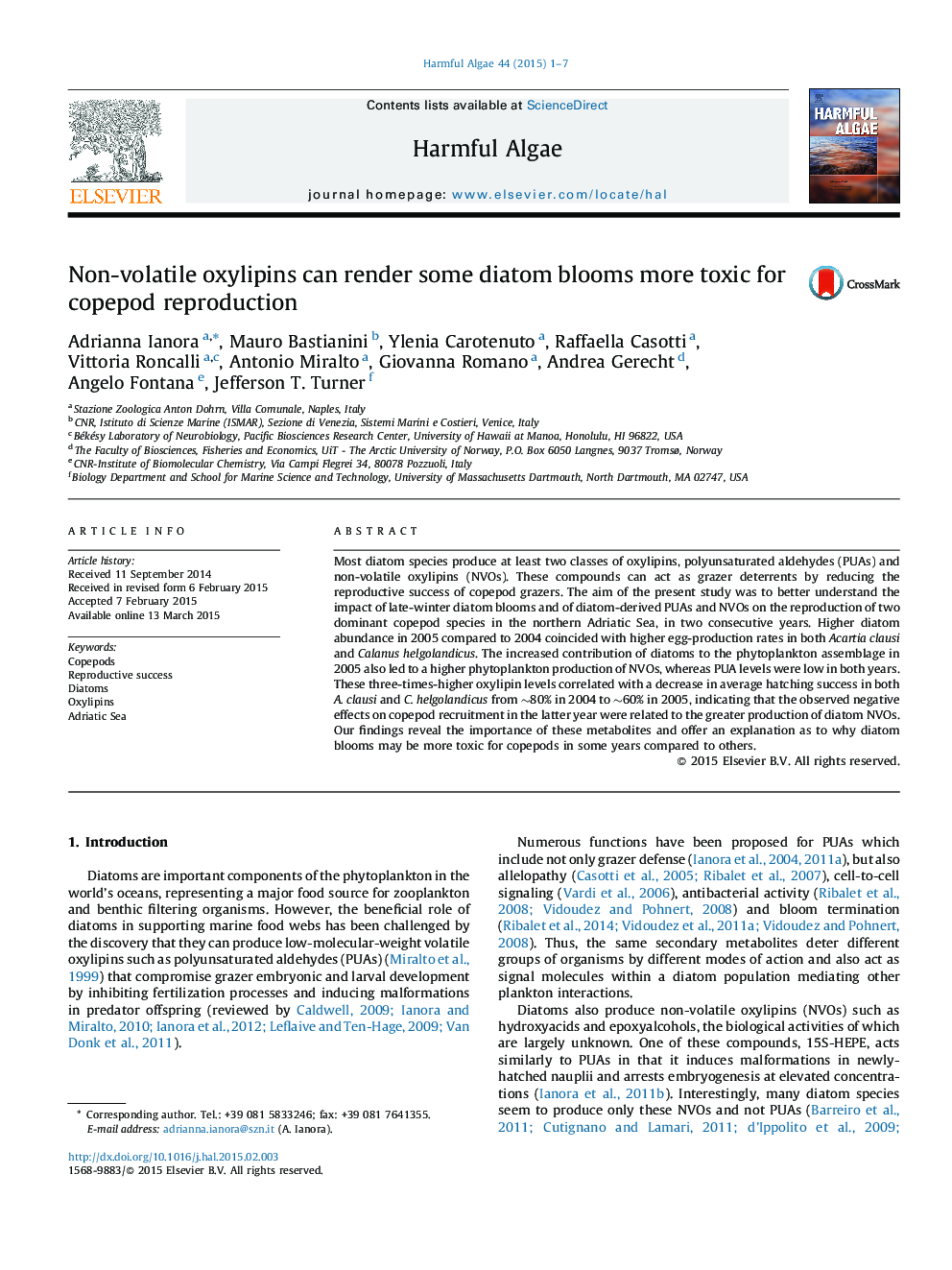| Article ID | Journal | Published Year | Pages | File Type |
|---|---|---|---|---|
| 4545239 | Harmful Algae | 2015 | 7 Pages |
•We studied the impact of diatom blooms on 2 copepodspecies in two different years.•Diatom polyunsaturated aldehydes (PUAs) were barely detectable in 2004 and 2005.•Higher production of diatom Non-Volatile Oxylipins (NVOs) was found in 2005.•Negative effects on copepod reproduction were related to high production of NVOs.•NVOs may explain why some diatom blooms are more toxic for copepods than others.
Most diatom species produce at least two classes of oxylipins, polyunsaturated aldehydes (PUAs) and non-volatile oxylipins (NVOs). These compounds can act as grazer deterrents by reducing the reproductive success of copepod grazers. The aim of the present study was to better understand the impact of late-winter diatom blooms and of diatom-derived PUAs and NVOs on the reproduction of two dominant copepod species in the northern Adriatic Sea, in two consecutive years. Higher diatom abundance in 2005 compared to 2004 coincided with higher egg-production rates in both Acartia clausi and Calanus helgolandicus. The increased contribution of diatoms to the phytoplankton assemblage in 2005 also led to a higher phytoplankton production of NVOs, whereas PUA levels were low in both years. These three-times-higher oxylipin levels correlated with a decrease in average hatching success in both A. clausi and C. helgolandicus from ∼80% in 2004 to ∼60% in 2005, indicating that the observed negative effects on copepod recruitment in the latter year were related to the greater production of diatom NVOs. Our findings reveal the importance of these metabolites and offer an explanation as to why diatom blooms may be more toxic for copepods in some years compared to others.
